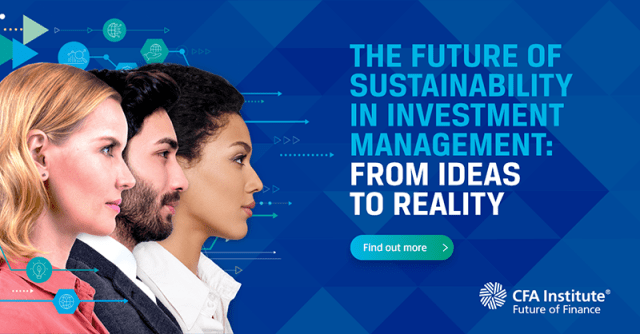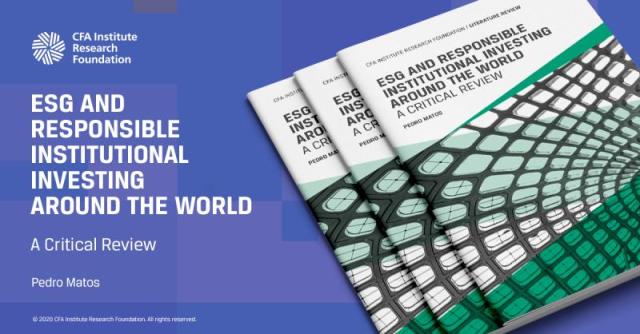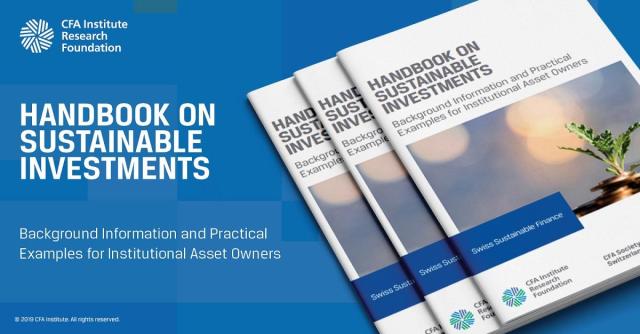[ad_1]
How does an organization attract and engage its various stakeholders? An inspiring purpose articulated in a mission statement may be one of the most effective methods. The author Simon Sinek presents an even simpler concept in his book Start with Why. Sinek believes that what differentiates great leaders, companies, and movements is that they make it easy for people to understand the Why behind them.
An organization can enable sustainable sales and long-term growth when it earns trust from its customers and other internal and external partners. Just like any other business, asset managers need to articulate their Why. Clients today want their investments to produce a genuine positive impact as well as a return. Asset managers need to define how they plan to do that.
We at SustainFinance believe this is not only possible but essential.
Define the Why
The big story in asset management in recent years is the emergence of sustainability- and environmental, social, and governance (ESG)-focused funds. On the back of substantial inflows into these products, existing funds have been rebranded, or even greenwashed, to create an ESG look.
But investors and clients are smart and are developing the skills to tell if an investment strategy is genuinely ESG. Regulators also have started paying attention, especially in Europe, conducting oversight to determine whether green-sounding funds are living up to their branding.
This is why asset managers with ESG ambitions need to be careful and define their Why from the outset. That requires laying out what they mean by ESG. In this context, the ESG lens is not just a risk-management tool, but a means to achieve beneficial, non-financial outcomes.
This is a crucial difference. We believe every asset manager should screen for ESG risks. That positive, non-bottom-line objective, however, is much harder to realize. It requires a commitment at the very top that cascades down through an organization. That begins with the broader definition of the Why.
Clients aren’t naive and they are getting better at distinguishing the authentic ESG asset managers from the pretenders. A key test is to start with the C-suite and the board. Are they walking the walk and talking the talk? Do board members have expertise in sustainability? Are there ESG-related KPIs?
If an asset manager’s marketing messages aren’t backed up by concrete actions tied to measurable ESG achievements, clients will differentiate the hype from the genuine intention, the form from the substance.
Quick Toolbox: Is a Fund ESG Authentic?
| Is the factsheet or other public report tracking ESG objectives? |
| What percentage of the firm’s total assets under management (AUM) are ESG assets? |
| Does the clarity of the mission align with the products? |
| What is the ESG track record in recent years? |
| Does ESG fit with the organizational culture? |
Asset managers have to do things differently than they did in the past. They need to manage relationships and additional stakeholders. Ten years ago, when ESG was not so central to investment, dialogue was still critical. But the number of stakeholders has increased substantially. Gaining buy-in from clients, regulators, and non-governmental organizations (NGOs), among other market participants, is essential and requires new skills and expertise.
Delivering on goals we can achieve on our own is always easier than building consensus and gaining acceptance from others. Leadership is required to convert ideals into actionable goals.
Collaborate
To have a meaningful influence on corporates and policymakers, asset managers need to collaborate with other industry players or NGOs. These may include Climate Action 100+, the Net Zero Asset Owner Alliance, and the Climate Bonds Initiative.
But collaboration takes more than a signature. Asset managers have to go beyond the marketing declarations. To engage and influence corporates, they have to decide and home in on their objectives. This can be difficult. There are so many different areas of concern — biodiversity, gender diversity, net zero, circular economy, etc. Asset managers have to identify their priorities.
They also have to know what they’re talking about. They need to demonstrate in-depth expertise on the issues in question. For example, Climate Action 100 + is an investor-led movement that works to make sure the major global greenhouse gas-emitting companies take steps to fight climate change. This is a specific goal. But what are the specifics of the sectors in question? For example, cement, steel, chemicals? Asset managers need to have both the industry-specific necessary technical and financial knowledge to help propel these companies toward achievable net-zero commitments.
And engagement requires sustained effort, resources, and dedication. To be credible, an asset manager must go beyond subscription fees. ESG Portfolio Management, a specialized boutique asset manager, provides a great example of how successful engagement works. The firm worked with the Kellogg Company to reduce the latter’s plastic waste and find more sustainable alternatives. They used the UN PRI collaboration platform to invite other asset managers to support the initiative. And they asked experts from the Ellen MacArthur Foundation and As You Sow nonprofit for their backing.
Use Data and Regulation Appropriately
Data is very important to these efforts, but its effective use requires three key steps: data sourcing, data integration, and data disclosures.
And there is a caveat: Data is a tool to measure whether the ESG ambitions of the asset manager are being achieved. The quantity of the data isn’t as important as the quality. How does the data tie in with the definition of the asset manager’s Why in the first place? Does the data allow progress toward the ESG objective to be monitored?
The answers to these question may not be clear cut. Data is not perfect and ESG is a broad concept that lacks concrete metrics. The applicable gauges can be qualitative or subject to cultural influences that inhibit widespread application.
The EU is trying to codify parts of the ESG world, with an emphasis on climate change adaptation and mitigation. But given the qualitative nature of some of these objectives, we don’t believe ESG is fully quantifiable. Regulatory oversight of the various ESG funds isn’t a panacea for either the investor or the asset manager. Just because a fund achieves Article 8 or Article 9 status under the EU’s Sustainable Finance Disclosure Regulation (SFDR) does not definitively prove the strategy is authentic. There are loopholes asset managers can exploit to make their strategy compliant. But again, smart investors will see through such efforts.
Moving Forward
ESG is not a destination in itself but a journey towards building a better planet. Asset managers need to ask and answer the Why at every stage and not be swayed by what is trendy or by imitation products.
ESG credibility and authenticity requires fund managers to rethink their purpose both as individuals and as organizations. Adapting and asking Why helps asset managers explore how their investments can have a genuine and positive influence on society.
If you liked this post, don’t forget to subscribe to the Enterprising Investor.
All posts are the opinion of the author. As such, they should not be construed as investment advice, nor do the opinions expressed necessarily reflect the views of CFA Institute or the author’s employer.
Image credit: ©Getty Images / Pixelci
Professional Learning for CFA Institute Members
CFA Institute members are empowered to self-determine and self-report professional learning (PL) credits earned, including content on Enterprising Investor. Members can record credits easily using their online PL tracker.
[ad_2]
Image and article originally from blogs.cfainstitute.org. Read the original article here.




